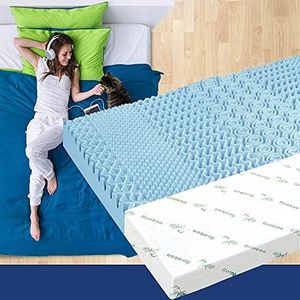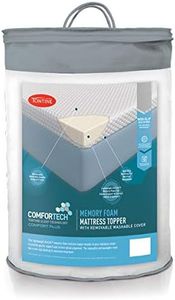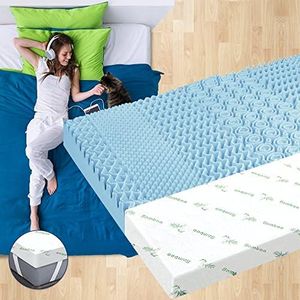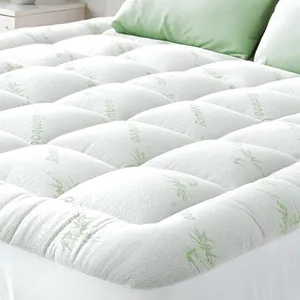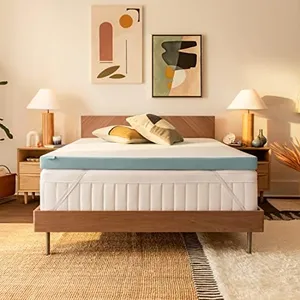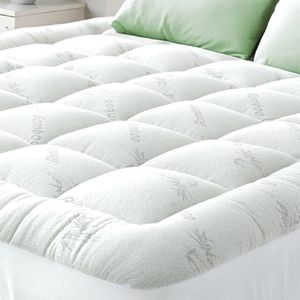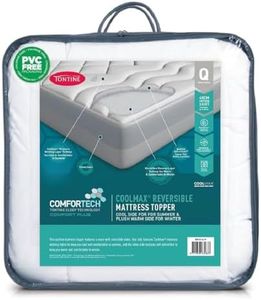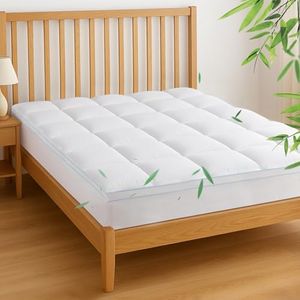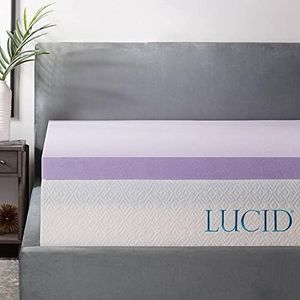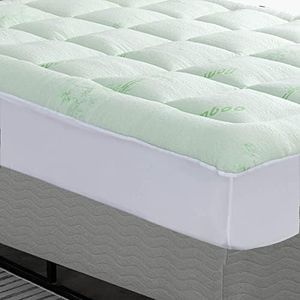We Use CookiesWe use cookies to enhance the security, performance,
functionality and for analytical and promotional activities. By continuing to browse this site you
are agreeing to our privacy policy
10 Best Full Size Mattress Toppers
From leading brands and best sellers available on the web.Buying Guide for the Best Full Size Mattress Toppers
Choosing a full-size mattress topper can change the way your mattress feels, improve your comfort, and even help relieve aches and pains. The right topper adds a layer of support or softness, adapts the bed to your unique preferences, and can extend the life of your mattress. To find the right fit for you, think about what your current mattress lacks, such as softness or firmness, how you sleep, and your sensitivity to things like heat or allergens.MaterialThe material of a mattress topper is what makes the biggest difference in comfort and feel. Common materials include memory foam, latex, down, polyester blends, and wool. Memory foam molds to your body and offers pressure relief, which is great if you have aches or like a snug feel. Latex is springier and more responsive, usually cooler and hypoallergenic. Down and feather toppers feel soft and fluffy but provide less support. Polyester and wool are budget-friendly and can add softness without heat buildup. You should pick a material that matches your comfort needs and any allergies or sensitivities you may have.
ThicknessThickness refers to how deep the topper is, usually measured in inches. Toppers range from about 1 inch to 4 inches thick. A thinner topper (1-2 inches) adds a slight upgrade in comfort and is good for those who only want a gentle change. Thicker toppers (3-4 inches) are better if your mattress is very firm or if you want a noticeable difference, such as extra cushioning for joint pain. Consider how much you want to change your mattress’s feel—small tweaks need less thickness, while major overhauls need more.
Firmness LevelFirmness describes how soft or hard the topper feels. Some toppers are soft and plush, while others are firm and supportive. Softer toppers cushion pressure points and suit side sleepers or people who want to sink in. Firmer toppers provide extra support and help keep your body from sinking—good for back or stomach sleepers or those with back pain. Choose a firmness that balances your sleep style and any physical needs you have.
Cooling PropertiesCooling features are important if you tend to sleep hot. Some toppers are made of breathable materials like latex or have gel infusions or ventilated designs in memory foam to help with airflow and temperature regulation. If you don't get too hot at night, this might not be a big concern, but if you often feel too warm, look for toppers labeled ‘cooling’ or made with materials known for temperature control.
Hypoallergenic FeaturesHypoallergenic toppers resist dust mites, mold, and other allergens. Materials like latex, wool, and certain synthetic foams are naturally hypoallergenic. If you have allergies or asthma, it's wise to pick a topper with these features to help create a cleaner sleeping environment. If allergies aren’t an issue for you, you can focus more on comfort and support.
Motion IsolationMotion isolation means how well the topper stops movement from spreading across the bed. Memory foam and some latex toppers do this best, reducing disturbances if you share your bed with someone who moves at night. This is an important feature if light sleeping or sharing a bed is an issue; otherwise, you can pay less attention to it.
Ease of CleaningMattress toppers can attract dust, sweat, and spills over time, so being able to clean them easily matters for hygiene. Some toppers have removable and washable covers, while others need spot cleaning. If you have kids, pets, or prefer low-maintenance products, look for toppers with washable covers or straightforward cleaning instructions. If your bedroom is a low-traffic, adult-only zone, this feature may be less critical.
